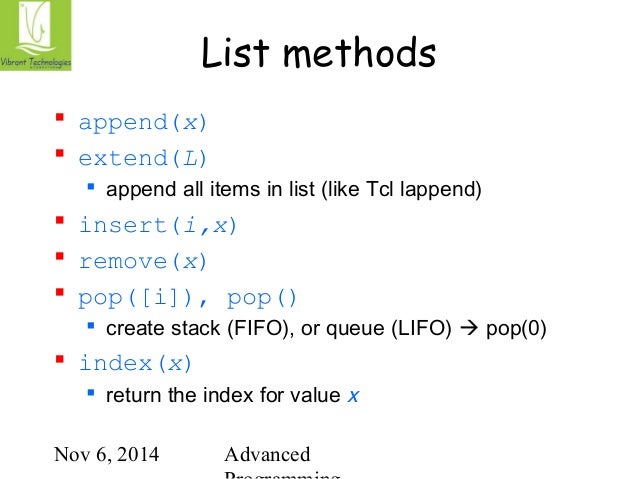Fibonacci Series Program In Tcl
Posted : admin On 11.12.2019Thirteen ( F 7) ways of arranging long (shown by the red tiles) and short syllables (shown by the grey squares) in a cadence of length six. Five ( F 5) end with a long syllable and eight ( F 6) end with a short syllable.The Fibonacci sequence appears in in connection with, as pointed out by Parmanand Singh in 1985.
Fibonacci Series Program In Tcl 2017
In the Sanskrit poetic tradition, there was interest in enumerating all patterns of long (L) syllables of 2 units duration, juxtaposed with short (S) syllables of 1 unit duration. Counting the different patterns of successive L and S with a given total duration results in the Fibonacci numbers: the number of patterns of duration m units is F m + 1.Knowledge of the Fibonacci sequence was expressed as early as ( c. 450 BC–200 BC). Singh cites Pingala's cryptic formula misrau cha ('the two are mixed') and scholars who interpret it in context as saying that the number of patterns for m beats ( F m+1) is obtained by adding one S to the F m cases and one L to the F m−1 cases.also expresses knowledge of the sequence in the (c. 100 BC–c. 350 AD).However, the clearest exposition of the sequence arises in the work of (c. 700 AD), whose own work is lost, but is available in a quotation by Gopala (c. 1135):Variations of two earlier meters is the variation. For example, for a meter of length four, variations of meters of two and three being mixed, five happens. works out examples 8, 13, 21. In this way, the process should be followed in all mātrā-vṛttas prosodic combinations.(c. 1150) is credited with knowledge of the sequence as well, writing that 'the sum of the last and the one before the last is the number. Of the next mātrā-vṛtta.'

Head showing the arrangement in 21 (blue) and 13 (aqua) spirals. Such arrangements involving consecutive Fibonacci numbers appear in a wide variety of plants.Fibonacci sequences appear in biological settings, such as branching in trees, the fruitlets of a, the flowering of, an uncurling fern and the arrangement of a, and the family tree of honeybees. Pointed out the presence of the Fibonacci sequence in nature, using it to explain the (-related) pentagonal form of some flowers. Field most often have petals in counts of Fibonacci numbers. In 1754, discovered that the spiral phyllotaxis of plants were frequently expressed in Fibonacci number series.advanced the idea that real instances can in part be understood as the expression of certain algebraic constraints on, specifically as certain. Main article:The Fibonacci sequence is one of the simplest and earliest known sequences defined by a, and specifically by a. All these sequences may be viewed as generalizations of the Fibonacci sequence.

In particular, Binet's formula may be generalized to any sequence that is a solution of a homogeneous linear difference equation with constant coefficients.Some specific examples that are close, in some sense, from Fibonacci sequence include:. Generalizing the index to negative integers to produce the numbers. Generalizing the index to real numbers using a modification of Binet's formula. Starting with other integers. Have L 1 = 1, L 2 = 3, and L n = L n−1 + L n−2. Use the Fibonacci recursion with other starting points to generate sequences in which all numbers are. Letting a number be a linear function (other than the sum) of the 2 preceding numbers.
The have P n = 2 P n − 1 + P n − 2. If the coefficient of the preceding value is assigned a variable value x, the result is the sequence of. Not adding the immediately preceding numbers. The and have P( n) = P( n − 2) + P( n − 3). Generating the next number by adding 3 numbers (tribonacci numbers), 4 numbers (tetranacci numbers), or more. The resulting sequences are known as n-Step Fibonacci numbers.See also.
A Platform for Aspiring ProgrammersCodeChef was created as a platform to help programmers make it big in the world of algorithms,computer programming, and programming contests. AtCodeChef we workhard to revive the geek in youby hosting a programming contest at the start of the month and two smallerprogramming challenges atthe middle and end of the month. We also aim to have training sessions and discussionsrelated toalgorithms, binary search, technicalities like arraysizeand the likes. Apart from providing a platform for programming competitions,CodeChefalso has various algorithm tutorials and forum discussions to help those who are new to theworld ofcomputerprogramming.- A Place to hone your'Computer Programming Skills'Try your hand at one of our many practice problems and submit your solution in the languageofyour choice. Ourprogramming contest judge accepts solutions in over 55+ programminglanguages. Preparing for codingcontests were never this much fun! Receive points, and move up through the CodeChef ranks.Use our practicesection to better prepare yourself for the multipleprogramming challenges that take place through-out the month on CodeChef.- Monthly Programming Contests, Cook-off and LunchtimeHere is where you can show off your computer programming skills.
Fibonacci Series Program In Python
Take partin our 10days long monthly coding contest and the shorter format Cook-off and Lunchtime codingcontests.Put yourself up for recognition and win great prizes. Our programmingcontests haveprizes worth up to INR 20,000 (for Indian Community), $700 (for Global Community) and lotsmore CodeChefgoodies up for grabs.